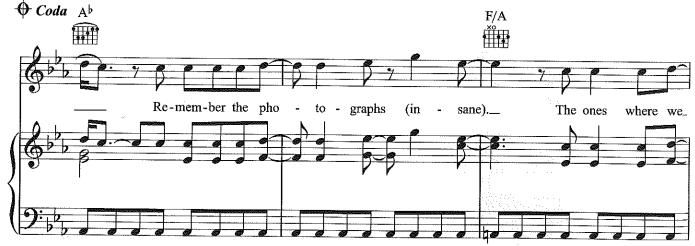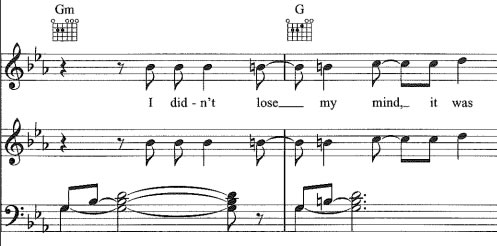There’s a lot of fuss over the fact that it’s “legal” to steal chords from other songs for your own compositions, as long as you don’t copy the melody. This isn’t always true. Melodies can also be harvested in a non-obvious way.
What the listener is perceiving is a combination of the chord as well as the melody. Chord extensions are a great way to recreate vocal melodies while hearing the chord at the same time.
Notice how the melody in the bridge of the Robbie Williams track ‘No Regrets‘ is almost exactly the same as the melody found in the bridge of ‘Free as a Bird‘ by The Beatles.


The chords are changed slightly. Instead of playing a diminished chord, the Robbie Williams track uses an F/A instead. The track actually goes on to repeat this melody as a recurring theme throughout.

This time, as a build-up before the chorus. The theme is the same, but the chords change from minor to major.
The rule is that nobody should be able to tell that you “stole” the melody. If you play the track for somebody else and they start saying “that sounds like”, then you know you’re on the wrong path and will more than likely be sued.
If you have a song idea that you’re working on, try picking a few other songs that sound similar and curating the melodies to create something new and unique.
